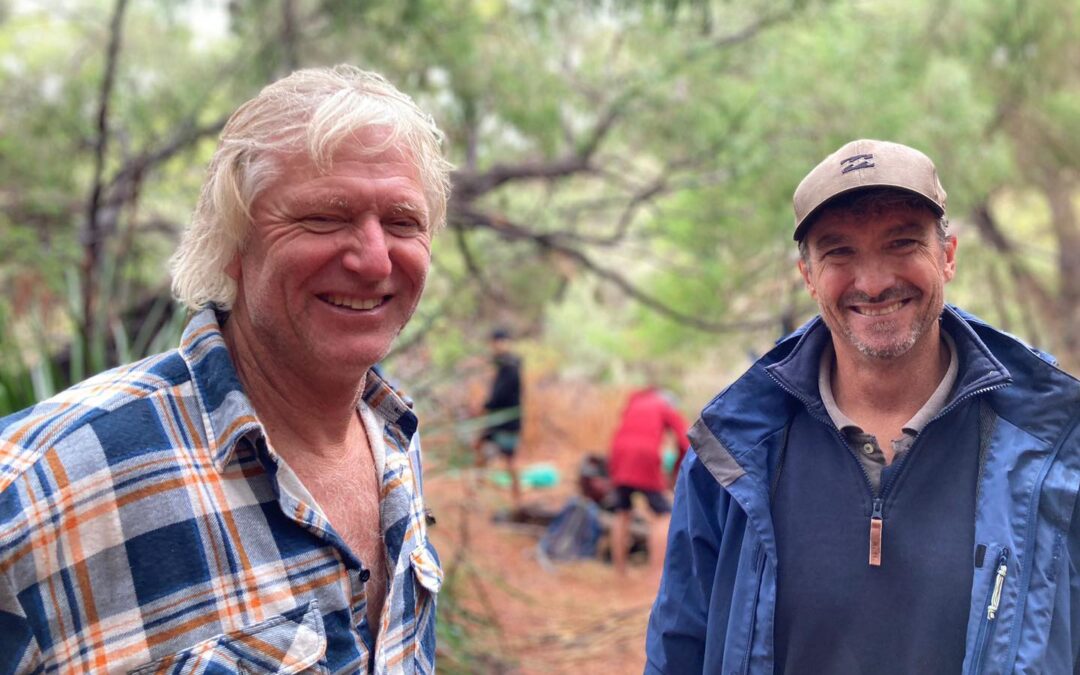Nature Conservation’s latest fully booked Friends of Wooditjup Bilya event was a huge success as keen locals aged from their teens to their 80s learned how to become river restorers.
The latest Friends event featured a guided tour of river restorer Ray Swarts’ property, as participants heard about the incredible transformation from weed infested degraded parkland to teaming biodiverse riparian forest. And the challenges and opportunities that arose following the 2011 bushfires and the current impact of the dry spell, particularly on the granite outcrop in his property.
Then the group crossed the river and did some restoration work, brushing and revegetation maintenance at Dallip Springs, which is a formerly arum lily-infested tributary that feeds the Margaret River.
Finally, Nature Conservation’s biodiversity officer Genevieve Hanran-Smith discussed how the river is faces growing pressure from population, tourism and climate change.
Friends of Wooditjup Bilya program coordinator Lauren Scanlon said: “What an incredible way to celebrate the arrival of the rain with two very inspiring and dedicated locals. Ray gave us his unique perspective on the immense value of the biodiversity and preservation of this region. Meanwhile, Genevieve enthralled the group with the incredible success stories of the Margaret River whilst also highlighting the very real threats it continues to face, including a fascinating take on the primitive lamprey and it’s transition from blind filter feeding mud dweller in the upper reaches of the Margaret River to an adventurous cobalt blue blood sucker who traverses the Indian Ocean and beyond.”
Ray spoke about his experiences rehabilitating his land, facing bushfire, controlling weeds and dealing with the recent “Big Dry”. He said he arrived as a complete novice but set out to educate himself. His advice is to “just get started – on any level”. “Write a letter, learn about the area, plant some trees – in fact just plant one tree, get emotionally attached to it surviving and doing well. For that tiny amount of effort, you will be rewarded for the rest of your life, and future generations will also benefit. I can’t think of a better return for effort.
He also stressed the importance of organic matter and highlighted the importance of using and retaining logs and mulch for restoring ecosystems and providing habitat. “If we want to regenerate native ecosystems, we’ve got to stop cleaning up the bush,” Ray says. “Leave the organic matter on the ground where it’s desperately needed. Organic matter matters.
“If you go to a bare paddock and put one log down, come back a month later, lift that log – that’s where you’ll find the most life. Organic matter feeds the soil, prevents erosion, provides habitat, moisture and protection for regenerating seedlings. It’s food for fungi, habitat for hundreds of species and life for the soil.”
Meanwhile, Genevieve told the group there have been so many wins and success stories in protecting the Margaret River over the past 20 years. But she said it faces increasing threats with reduced rainfall, lowering stream flow, weed pressure, development and visitation.
She also said there is now an “incredible boost in concerned community members and a groundswell and action from the community”. “Having hundreds of people each pull a few olive seedlings will make and incredible difference across the landscape,” she said. “It’s not up to one volunteer group or one agency – it’s up to all of us to work to protect and enhance the Wooditjup Bilya.”
Everyone is welcome at the monthly Friends of Wooditjup Bilya gatherings, which are a fantastic opportunity for locals to learn more about the Margaret River, hosted by cultural custodians, scientists or local experts. Meanwhile, the entire community is urged to put May 26 in the diary for a massive Nature Conservation planting day on the banks of the Margaret River.
The Friends of Wooditjup Bilya program is funded by the Shire of Augusta-Margaret River through the Environmental Management Fund.

